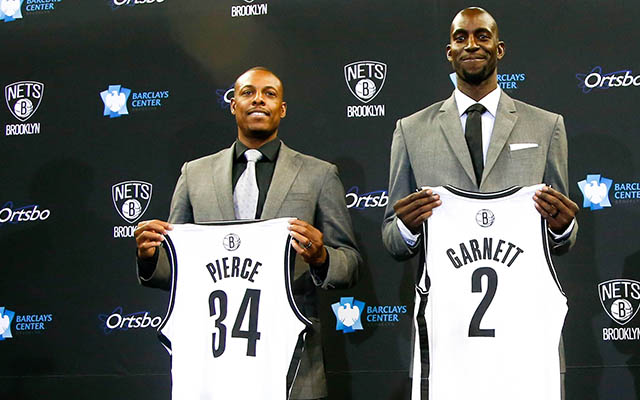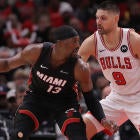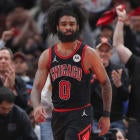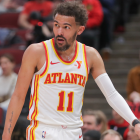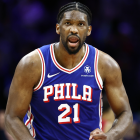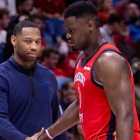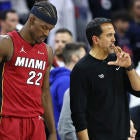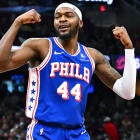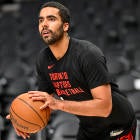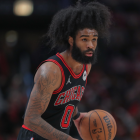In a wide-ranging piece as part of a follow-up to an in-depth column on the Boston Celtics, Sports Illustrated's Andrew Sharp spoke with GM Danny Ainge about the decision to trade Kevin Garnett and Paul Pierce to the Brooklyn Nets three years ago. That trade resulted in Boston getting several picks from the Nets, who in turn imploded. The outcome is Boston holding the rights to an unprotected first-round pick that may very well be top-three in June after the NBA lottery.
Most interestingly, Ainge says that at the time, he wasn't even "trying" to trade the two future Hall-of-Famers. From SI:
"I wasn't really trying to trade Kevin and Paul," says Ainge when asked about the deal that currently makes Boston's future twice as bright. "I had sort of resigned myself to the fact that Kevin and Paul would remain Celtics and retire as Celtics. There really hadn't been much momentum, or even tempting opportunities to move them, until Brooklyn came along and made an offer. It sort of came up last minute, right before the draft."
"We needed some direction," Ainge says of the Celtics in June 2013. "It's tough when you have aging veteran guys and young guys trying to mix. But at the same time, we would love to have our young core group of guys be mentored by KG and Paul. There was a lot of good things that could have happened either way."
Source: Celtics outtakes: Six lessons from 72 hours with Boston brass | SI.com.
Some thoughts:
1. Ainge could be telling a yarn here. It is not outside the realm of possibility for him to portray that idea, but he doesn't really gain anything in this context. Sharp notes how compelling it is to hear Ainge talk of the trade in terms of it making sense for the Nets, but I'll cop to being one that thought it did at the time. I thought the Nets were going to win 62 games the following year and meet the Heat in the Conference Finals with a shot at the Finals on the line. That seemed plausible. That it wasn't is what gets retro-fitted to history.
However, the enduring lesson from that trade is that you always have to leave yourself outs. No matter how much you want a deal, you have to say "If this doesn't work, I need an emergency escape hatch to deploy to the nearest rebuilding planet's surface." The Nets didn't do that. Instead they just powered up the engine and went full-speed ahead with no regard for an escape hatch.
2. This also vibes with an ongoing trend when it comes to Ainge and decision making: he's going to wait until the very last possible minute. Ainge not actively looking to make a trade can be taken as him thinking he simply wasn't going to get a deal, but it also shows he wasn't willing to take less than what he wanted.
This is relevant for a number of reasons.
One, it shows how patient and determined he is in chasing the deal he wants. With the number of assets he has right now and the talk of a big trade being one of their targets, that's important to remember. Ainge is not going to make a deal just to make a deal. He didn't do that with his two stars past their prime and he won't do it now.
Two, this is going to set a bad precedent in any future deal Ainge wants to make. It's human nature to want to compare such situations, so it's likely that if Ainge is presented with good return for what he has to offer now, he'll still compare it to the absolute haul they got from the Nets. In short, the Nets may have inadvertently prevented Boston from getting the star it's looking for by setting unrealistic expectations for what Ainge can expect on the market. It's not that Ainge isn't smart enough to consider these situations independently -- he very much is -- but when you attach subjective value to assets, you're more likely to hold onto them.
Either way, it's a fascinating look into a rare trade that not only drastically altered the course of two franchises, but continues to have impacts to this day.
